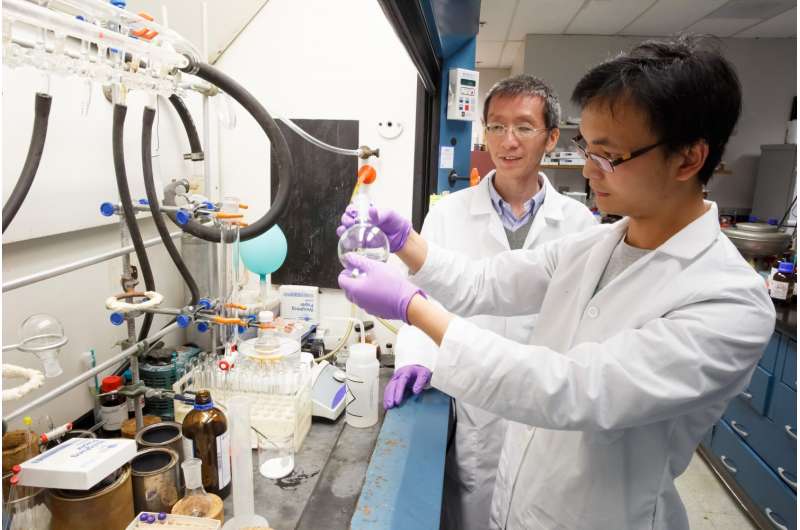New technique could speed drug development

Synthesizing useful new compounds is what pharmaceutical discovery and development is all about. Researchers at the School of Science at Indiana University-Purdue University Indianapolis have devised a method to substantially speed up the process.
The IUPUI chemists have developed and tested a new molecular binding technique that could shorten or abridge the human and animal drug discovery and development process. The new method also is potentially more economical and ecologically friendly than that currently used.
The new synthetic method is used in the production of compounds containing nitrogen. Approximately 75 percent of compounds with medicinal uses have a nitrogen atom. Such drugs are used to treat a wide range of conditions including cancers, bacterial and inflammatory diseases, attention-deficit/hyperactivity disorder, Alzheimer's disease, epilepsy, asthma, and diabetes.
Drugs are chemical compounds with differing arrangements of atoms. The new drug-synthesis method is an organic chemical process taking fewer steps than older methods. It has potential usefulness in the development of a second generation of existing drugs as well as contributing to the discovery of new pharmaceutical treatments.
"Site-selective C-H arylation of primary aliphatic amines enabled by a catalytic transient directing group" is published online ahead of print in Nature Chemistry. Authors of the paper are Haibo Ge, associate professor of chemistry and chemical biology, and post-doctoral researcher Yongbing Liu of the School of Science at IUPUI.
"Having fewer steps and simpler chemical ingredients, as our method does, has potential benefits both for the pharmaceutical industry and for patients," said Ge, the organic and medicinal chemist who developed the method and is the corresponding author of the Nature Chemistry study. "Our study showed that our technique is an advancement over the currently used method.
"While we are still at an early stage, it appears that in addition to improving the process of synthesizing molecules, our improved method makes that process more economical by saving time and labor. As it is "atom efficient," there is less waste needing disposal."
Using their new method, the IUPUI chemists successfully synthesized analogues of fingolimod, a drug used to treat relapsing forms of multiple sclerosis, an autoimmune inflammatory disease.
"Hydrocarbons—compounds made out of carbon and hydrogen or having a carbon-hydrogen bond—are used in daily life all the time - from clothes to toothbrushes," said Partha Basu, chair and professor of chemistry and biological chemistry at IUPUI. "These compounds are generally stable and do not react easily with common chemicals. Transformation of one hydrocarbon to another is of immense interest for developing new materials, from drugs to energy storage.
"But making such transformation in a selective way has been a challenge for more than a century. This is what Dr. Ge did using a simple but efficient process that requires fewer steps. This simplicity makes the chemistry unique, and it can have a lasting impression in the field of C-H bond activation," Basu said.
More information: Yongbing Liu et al. Site-selective C–H arylation of primary aliphatic amines enabled by a catalytic transient directing group, Nature Chemistry (2016). DOI: 10.1038/nchem.2606
Journal information: Nature Chemistry















